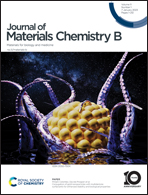Electrochemical biosensors based on saliva electrolytes for rapid detection and diagnosis
Abstract
In recent years, electrochemical biosensors (ECBSs) have shown significant potential for real-time disease diagnosis and in situ physical condition monitoring. As a multi-constituent oral fluid comprising various disease signaling biomarkers, saliva has drawn much attention in the field of point-of-care (POC) testing. In particular, during the outbreak of the COVID-19 pandemic, ECBSs which hold the simplicity of a single-step assay compared with the multi-step assay of traditional testing methods are expected to relieve the human and economic burden caused by the massive and long-term sample testing process. Noteworthily, ECBSs for the detection of SARS-CoV-2 in saliva have already been developed and may replace current testing methods. Furthermore, the detection scope has expanded from routine indices such as sugar and uric acid to abnormal biomarkers for early-stage disease detection and drug level monitoring, which further facilitated the evolution of ECBSs in the last 5 years. This review is divided into several main sections. First, we discussed the latest advancements and representative research on ECBSs for saliva testing. Then, we focused on a novel kind of ECBS, organic electrochemical transistors (OECTs), which hold great advantages of high sensitivity and signal-to-noise ratio and on-site detection. Finally, application of ECBSs with integrated portable platforms in oral cavities, which lead to powerful auxiliary testing means for telemedicine, has also been discussed.

- This article is part of the themed collection: Journal of Materials Chemistry B Recent Review Articles


 Please wait while we load your content...
Please wait while we load your content...